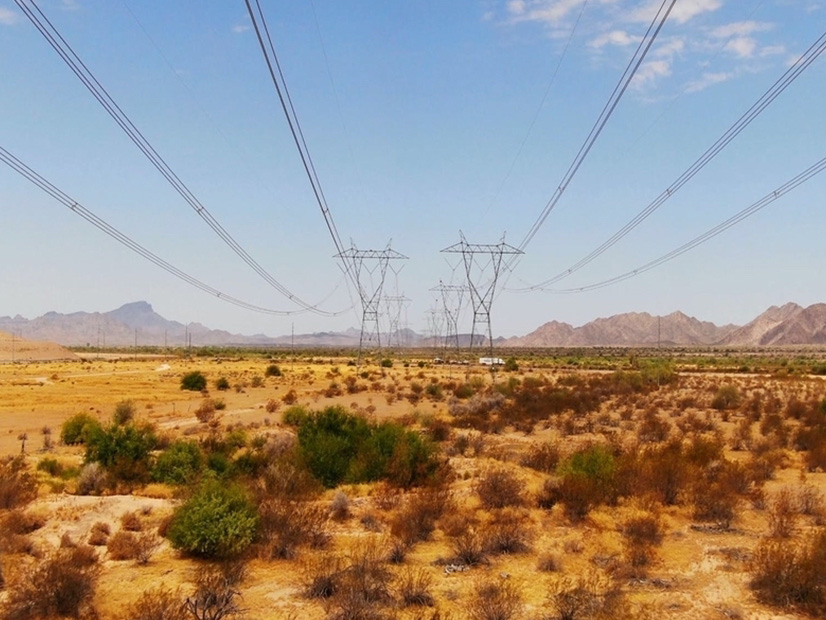
Large buyers of clean energy were the key backers of a California bill passed last month to strengthen the state’s reliability planning.
The state’s reliability planning has grown more challenging given the increased frequency of extreme weather events, higher temperatures and greater load variability — creating the need for better planning to offset uncertainty and keep the lights on.
Sponsored by the Clean Energy Buyers Association (CEBA), Assembly Bill 2368 seeks to address that need, requiring the California Public Utilities Commission to adopt a 1-in-10 loss of load expectation (LOLE) — or a similarly robust planning standard — when setting resource adequacy requirements.
The bill also directs the commission to develop a “mid-term reliability assessment” using probabilistic modeling that looks two to five years into the future to better anticipate potential procurement shortfalls and resulting reliability issues.
Additionally, it requires increased information-sharing between the CPUC and CAISO to enable the ISO to conduct its own reliability modeling and ensure it can meet its own regulatory obligations.
While the 1-in-10 metric is a widely used planning standard, the legislation marks the first time it has been written into California law.
According to Heidi Ratz, CEBA deputy director of market and policy innovation, FERC views RA as state jurisdictional, though most planning standards are set by regional balancing authorities. Other entities, such as the Western Resource Adequacy Program, have formalized a 1-in-10 LOLE target, and agencies such as the CPUC and the California Energy Commission support it for California.
‘Right Amount of Resources’
Proponents of the bill say that enshrining a stricter LOLE standard into law will modernize the state’s planning framework and improve the planning and procurement process.
“Grid planners in California have acknowledged the challenges to electricity resource adequacy and grid reliability within the state, and CEBA sponsored this legislation to tackle some fundamental energy planning issues,” Ratz said in a CEBA press release. “As our grid faces unprecedented pressures, including extreme weather and demand growth, California leaders must have a sense of urgency in implementing sound resource adequacy planning and procurement processes.”
Ratz further emphasized that the bill will help grid planners increase trust in their RA programs and decrease the need to rely on the state’s Strategic Reliability Reserve.
“As planning agencies move towards procuring the right amount of resources well in advance, we will see fewer outages, ‘near misses’ and emergency procurements, meaning reliability will hopefully be noticeably improved,” Ratz told RTO Insider in an email. “We’ll also see a decrease in scarcity which leads to lower transaction costs in the real-time energy market and more functional capacity markets that send better price signals to market participants. Ensuring the right resources show up in the energy market during times of grid stress is the primary way to improve reliability.”
CAISO stakeholders have been calling for improved LOLE modeling for some time. In June, Gridwell Consulting asked the ISO to take a bigger role in reliability planning and conduct probabilistic LOLE modeling to better understand the aggregate impact of the changing climate on grid conditions. (See Stakeholders Call on CAISO to Take Larger Role in Reliability Planning.)
Gridwell CEO Carrie Bentley emphasized the need for better planning by citing data showing that, between 2017 and 2023, load variability was significant enough to cause load forecasts to deviate from actual loads by several thousand more megawatts than historically normal.
Gridwell joined CEBA in support of the legislation, also emphasizing its potential to lower costs.
“This will improve reliability and in the long run lower costs compared to the system in place today that caused California’s reliability levels to vary widely over time,” Bentley said.
In 2014, the CPUC opened a proceeding to address mid-term reliability that resulted in recommendations that were never adopted. Had they been adopted, it is likely that much of 2020’s capacity shortfalls could have been avoided, Ratz said. The lack of a stricter planning and modeling framework created the conditions for the events in 2020 and continues to have impacts on cost and reliability.
“Since the outages of 2020, California has issued four last-minute, ad-hoc emergency procurement orders; each ordered the LSEs to sign contracts with new resources that can come online as quickly as possible,” Ratz said. “CPUC did conduct limited modeling (reliability analyses) before adopting these decisions that demonstrated the urgent need for additional generation capacity to come online in the mid-term. Combined with the strategic reserve, these were some of the most expensive procurements in California’s history, and these expensive electricity emergencies have material impact on customers’ operations in the state.”
CEBA is urging Gov. Gavin Newsom to expedite signing the bill, which has received support from other agencies such as the Environmental Defense Fund, Pacific Gas and Electric, International Brotherhood of Electrical Workers and more.
AB 2368 is the first reliability-focused bill sponsored by CEBA, signaling the importance of reliability to the group’s members.
“The planning improvements in the bill are critical to California’s ability to provide energy customers with low-cost, reliable, clean power,” Ratz said.

